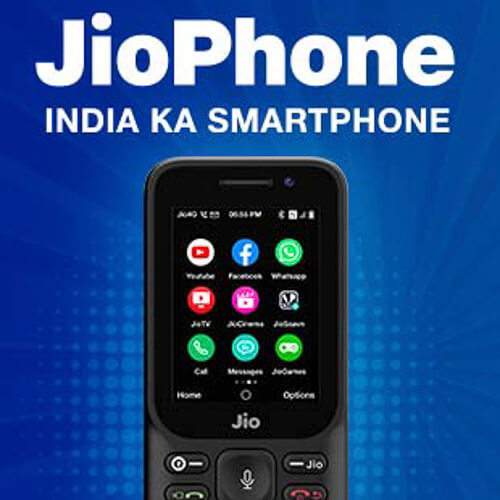India's Jio introduces device offers to attract rivals' 2G users
In a bid for rivals' 2G subscribers, India's pure-play 4G telco Reliance Jio has come up with two bundled offers for its 4G low-price handset, JioPhone.

In a bid to attract rivals Bharti Airtel and Vodafone Idea's 2G subscribers, India's pure-play 4G telco, Reliance Jio, has come up with two new bundled offers for its 4G low-priced feature phone, the JioPhone.
The first offer is priced at INR1,999 ($27.2), and offers a 4G feature phone with 24 months of unlimited services. The second offer is for INR1,499 ($20.4) for the device with 12 months of unlimited services.
The company is also offering a special plan for existing users of the JioPhone, costing INR749 ($10.19) for 12 months.
Figure 1:  Bundling up: Jio's push to woo Airtel and Vodafone 2G customers continues with new deals for the Jiophone. (Source: Jio)
Bundling up: Jio's push to woo Airtel and Vodafone 2G customers continues with new deals for the Jiophone. (Source: Jio)
The three-year lock-in period for the JioPhone's existing users is coming to an end, and this new plan is designed to retain these users.
India still has more than 300 million 2G subscribers, and the cost of smartphones is the biggest barrier in moving them to a 4G network. Jio has been campaigning for a 2G-mukt Bharat (2G-Free India) and has asked for a policy change to move 2G subscribers to 4G so that they can benefit from mobile broadband.
Jio: Struggling to maintain quality?
Even as Jio looks to attract the 2G subscribers of its rivals, it needs to address the problem of poor network experience, which is emerging as the key reason why Bharti Airtel has attracted a greater number of new customers in the past few months.
A recent study by OpenSignal analyzed the mobile experience of smartphone users who changed their service providers in 2020.
Want to know more about open RAN? Check out our dedicated open RAN channel here on Light Reading.
In many cases, sub-standard mobile experience led subscribers to move from their operator. They also struggled with low 4G availability and spent less time connected to mobile data.
"From September onwards, when carriers once again decided to hike prices, Airtel continued to gain users until the end of the year. However, that trend on Jio's network more or less flattened and then gradually started to decline – the negative trend was more pronounced from mid-November onwards," says the OpenSignal report.
Airtel also has more active subscribers with better average revenue per user (ARPU) than Jio. The company needs to ensure a quality experience for existing subscribers and enhance its appeal for new users.
Related posts:
— Gagandeep Kaur, contributing editor, special to Light Reading
Read more about:
AsiaAbout the Author(s)
You May Also Like












